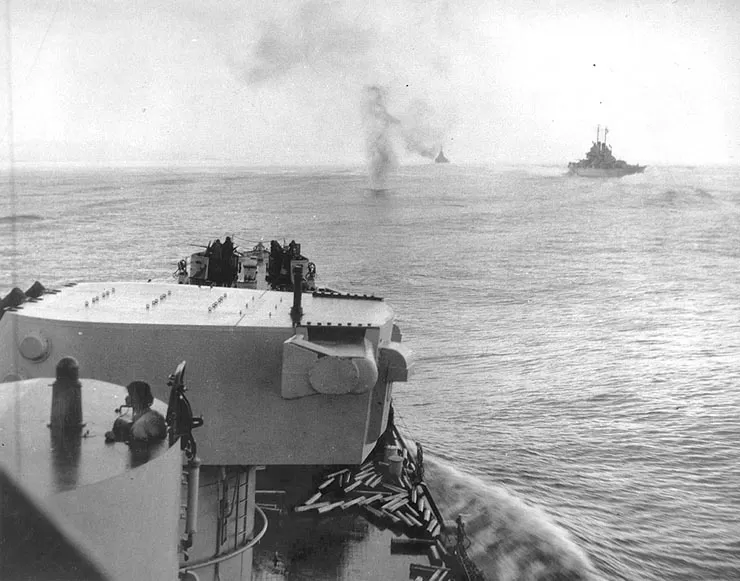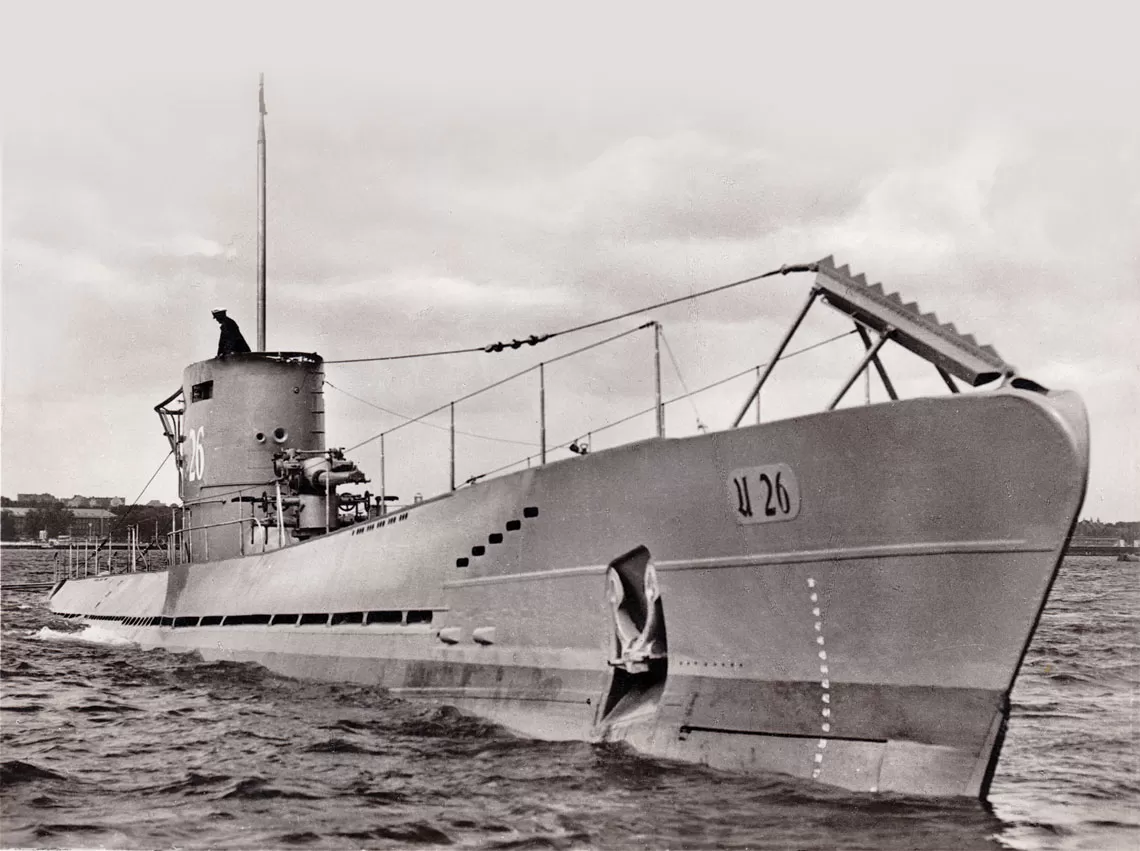
Battle of Empress Augusta Bay
The light cruiser USS Montpelier, the flagship of the commander of Cadmium Detachment TF 39. Merrill.
After the Americans landed on Bougainville, on the night of November 1-2, 1943, a fierce clash of a strong Japanese cadmium team took place near Empress Augusta Bay. Sentaro Omori sent from the Rabaul base along with the American TF 39 team on the orders of Cadmius. Aaron S. Merrill covers the landing force. The battle ended happily for the Americans, although for a long time it was not certain which side would gain a decisive advantage in the fight.
Beginning of Operation Wheel
In early November 1943, the Americans planned Operation Cartwheel, the purpose of which was to isolate and weaken through constant attacks on the main Japanese naval and air base at Rabaul, in the northeastern part of the island of New Britain, the largest in the Bismarck archipelago. To do this, it was decided to land on the island of Bougainville, to build a field airfield on the captured bridgehead, from which it would be possible to conduct a continuous air attack on the Rabaul base. The landing site - at Cape Torokina, north of the bay of the same name, was chosen specifically for two reasons. The ground forces of the Japanese in this place were small (later it turned out that only about 300 people opposed the Americans in the landing area), the troops and landing units could also cover their fighters from the airfield on the island of Vella Lavella. .
The planned landing was preceded by the actions of the TF 39 group (4 light cruisers and 8 destroyers). Aaron S. Merrill, who arrived at the Japanese base on Buka Island shortly after midnight on November 1 and bombarded his entire group with hurricane fire starting at 00:21. On his return, he repeated a similar bombardment of Shortland, an island southeast of Bougainville.
The Japanese were forced to act quickly, and the commander-in-chief of the United Japanese Fleet, Adm. Mineichi Koga ordered the ships stationed at Rabaul to intercept Merrill's crew on 31 October as a Japanese aircraft spotted her marching from the narrow Purvis Bay between the Florida Islands (today called Nggela Sule and Nggela Pile) through the waters of the famed Iron Lower Strait. However, the commander of the Japanese troops Cadmius. Sentaro Omori (then had 2 heavy cruisers, 2 light cruisers and 2 destroyers), leaving Rabaul for the first time, missed Merrill's team in search and, disappointed, returned to base on the morning of November 1. There he later learned of the American landing at Empress Augusta Bay on the southwest coast of Bougainville. He was ordered to return and attack the American landing troops, and before that, defeat the Merrill team, which covered them from the sea.
The landing in the area of Cape Torokina was really carried out by the Americans very effectively during the day. Parts of the 1st Cadmian landing. Thomas Stark Wilkinson approached Bougainville on 18 November and began Operation Cherry Blossom. Eight conveyors up to approx. 00:14 3 Marines of the 6200th Marine Division and 150 tons of supplies were blown up. At dusk, the transports were cautiously withdrawn from Empress Augusta Bay, awaiting the arrival of a strong Japanese team during the night. An attempt by the Japanese to counterattack, first by aviation from the Rabaul base, was unsuccessful - two Japanese air strikes with a force of more than XNUMX vehicles were dispersed by numerous fighters covering the landing. Only the Japanese navy could have done more.
Japanese drugs
Indeed, cadmium. That night, Omori was to attempt an attack, already with a much stronger crew, reinforced by several destroyers. The heavy cruisers Haguro and Myōk were to be the biggest Japanese advantage in the coming clash. Both of these units were veterans of the battles in the Java Sea in February-March 1942. Merrill's team, which was supposed to bring them into battle, had only light cruisers. In addition, the Japanese had additional ships of the same class, but light - "Agano" and "Sendai", and 6 destroyers - "Hatsukaze", "Naganami", "Samidare", "Sigure", "Shiratsuyu" and "Wakatsuki" . First, these forces were to be followed by 5 more transport destroyers with landing forces on board, which the counter-raider was supposed to do.
In the coming clash, the Japanese this time could not be sure of their own, because the period when they had decisive successes in fighting the Americans in night skirmishes was long gone. Moreover, the August battle in Vella Bay showed that the Americans had learned to use torpedo weapons more effectively and had already managed to inflict a crushing defeat on the Japanese flotilla in a night battle, which had not been done before on such a scale. The commander of the entire Japanese battle group from Myoko Omori has not yet gained combat experience. Cadmium didn't have it either. Morikazu Osugi with a group of light cruisers Agano and destroyers Naganami, Hatsukaze and Wakatsuki under his command. The cadmium group had the most combat experience. Matsuji Ijuina on the light cruiser Sendai, assisted by Samidare, Shiratsuyu, and Shigure. These three destroyers were commanded by Commander Tameichi Hara from the deck of the Shigure, a veteran of most of the most important engagements to date, from the Battle of the Java Sea, through the battles in the Guadalcanal area, later unsuccessfully in Vella Bay, to the last battle off the island of Vella Lavella ( on the night of October 6-7), where he even managed to some extent avenge an earlier defeat by the Japanese in early August. After the war, Hara became famous for his book The Japanese Destroyer Captain (1961), an important source for historians of the naval war in the Pacific.
